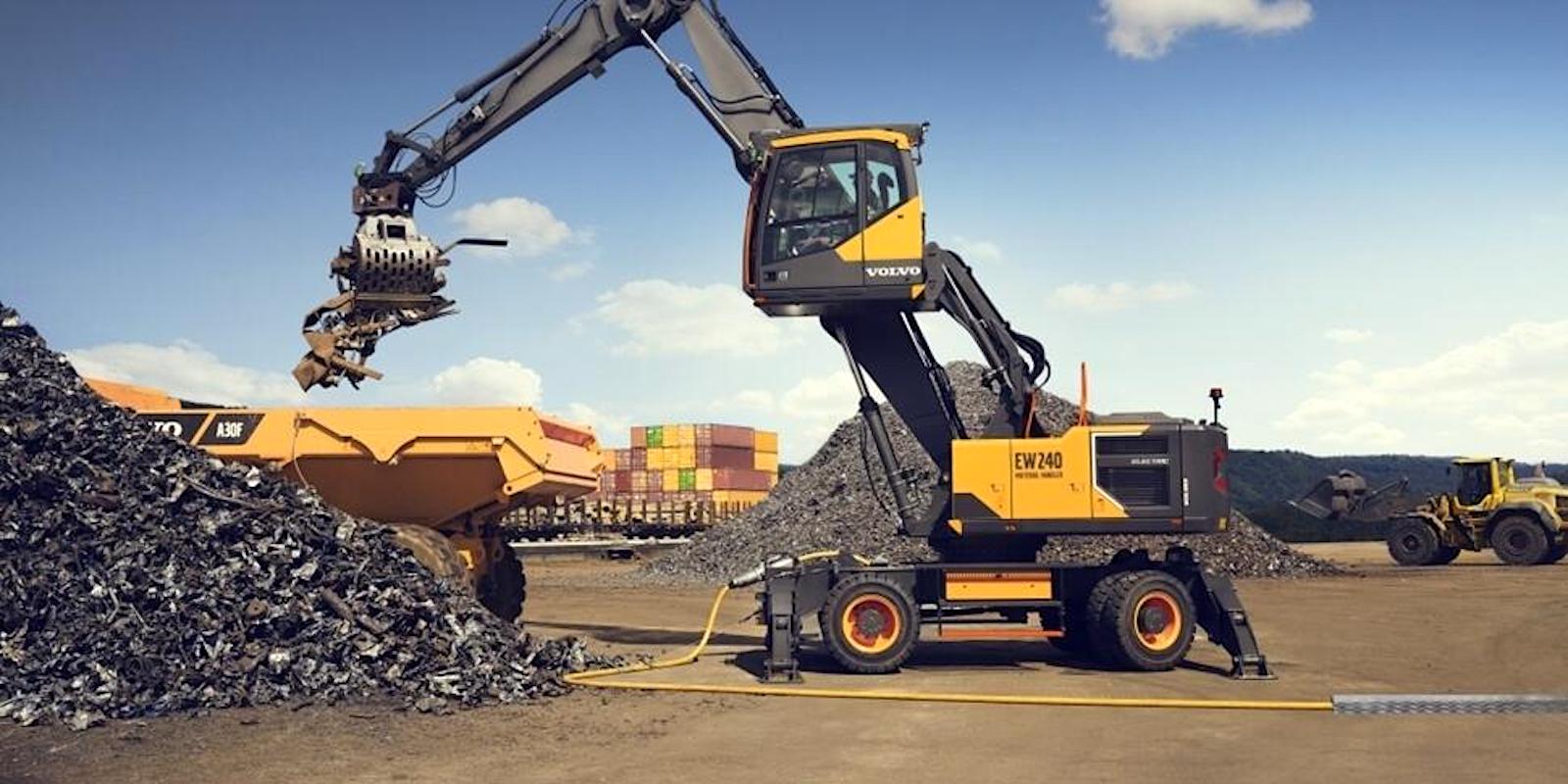Electric materials handler from Volvo CE never needs recharging
Volvo CE has just announced a new electric material handler that promises increased maintenance intervals and lower operating costs without the need to recharge its batteries … because it hasn’t got any.
The new Volvo EW240 breaks away from conventional diesel-related consumables, doing away with components such as engine oil, filters, DEF injectors, and water separators – and breaks away from conventional EV design by doing away with another critical component: the battery.
Unlike traditional electric vehicles with large, heavy batteries, Volvo’s electric material handler operates continuously without the need for refueling or recharging. This is made possible by a permanent grid connection (read: a wired plug), which Volvo claims makes it the ideal equipment asset for indoor use or in continuous, repetitive sorting and recycling applications.
The EW240 offers operators the same levels of performance and control they’re used to getting from conventional diesel equipment, without the noise, fumes, and health hazards associated with diesel particulate emissions.
Volvo plugs-in to power up the job site

“The EW240 Electric Material Handler is the ideal hard-working sustainable solution for waste and recycling – an industry where circularity is in close focus,” says Thomas Nather, SAS Commercial Project Manager, Volvo CE. “By providing near silent and zero emission electric solutions, we are supporting our customers need to work more sustainably and deliver on their transformation journey as well as lower the cost of their operations.”
Electrek’s Take
The biggest problem with electrifying big, earth-moving heavy equipment is math. Simply put, it takes many more kilowatts of energy to dig up tons and tons of dirt and rocks than it does to send an aerodynamically smoothed sedan down a road. That’s why you still see a push towards hydrogen and other energy-dense fuels in construction – but permanently grid connected assets, whether wired or inductive, could solve for some of the limitations of batteries on job sites that can support them. If the EW240 is a commercial success, expect Volvo CE to roll out more grid-connected options in the years to come.
FTC: We use income earning auto affiliate links. More.

Volvo CE has just announced a new electric material handler that promises increased maintenance intervals and lower operating costs without the need to recharge its batteries … because it hasn’t got any.
The new Volvo EW240 breaks away from conventional diesel-related consumables, doing away with components such as engine oil, filters, DEF injectors, and water separators – and breaks away from conventional EV design by doing away with another critical component: the battery.
Unlike traditional electric vehicles with large, heavy batteries, Volvo’s electric material handler operates continuously without the need for refueling or recharging. This is made possible by a permanent grid connection (read: a wired plug), which Volvo claims makes it the ideal equipment asset for indoor use or in continuous, repetitive sorting and recycling applications.
The EW240 offers operators the same levels of performance and control they’re used to getting from conventional diesel equipment, without the noise, fumes, and health hazards associated with diesel particulate emissions.
Volvo plugs-in to power up the job site

“The EW240 Electric Material Handler is the ideal hard-working sustainable solution for waste and recycling – an industry where circularity is in close focus,” says Thomas Nather, SAS Commercial Project Manager, Volvo CE. “By providing near silent and zero emission electric solutions, we are supporting our customers need to work more sustainably and deliver on their transformation journey as well as lower the cost of their operations.”
Electrek’s Take
The biggest problem with electrifying big, earth-moving heavy equipment is math. Simply put, it takes many more kilowatts of energy to dig up tons and tons of dirt and rocks than it does to send an aerodynamically smoothed sedan down a road. That’s why you still see a push towards hydrogen and other energy-dense fuels in construction – but permanently grid connected assets, whether wired or inductive, could solve for some of the limitations of batteries on job sites that can support them. If the EW240 is a commercial success, expect Volvo CE to roll out more grid-connected options in the years to come.
FTC: We use income earning auto affiliate links. More.
